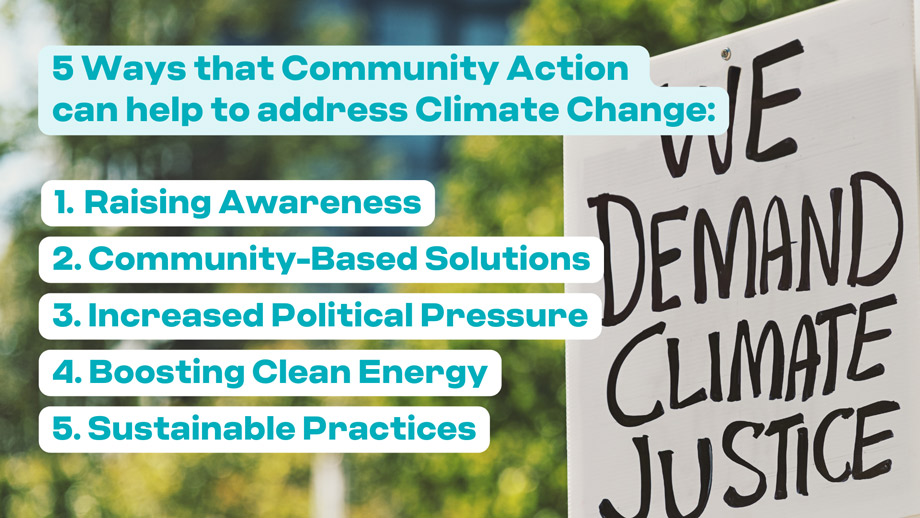Climate change is something that affects us all, from individuals to businesses, and we must all work together to curb its negative impacts. While government regulations and business activities are critical to making the green shift, community action can have a substantial effect in reducing our collective carbon footprint. Communities can drive change, increase awareness and create an overall cleaner, healthier environment for future generations.

5 Ways that Community Action can Help to Address Climate Change
1. Raising Awareness
Communities can greatly impact spreading knowledge about the negative effects of climate change and the need for action. Through community events, educational workshops, and other initiatives, people can be informed on the latest research, efficient practices, and successful solutions to combat climate change. For example, a community can organize a monthly beach clean-up event to not only keep their area clean but also raise awareness about the importance of reducing plastic waste in the ocean.
‘I was arrested for civil disobedience … I turned 82 in jail!’ — Actor and activist Jane Fonda sounding the alarm about the need for ‘bold action’ on the climate crisis.
— Mike Hudema (@MikeHudema) February 12, 2023
There's no time to wait. This planet is all we've got. Defend it. #ActOnClimate#ClimateEmergency #climate pic.twitter.com/2NCThCEZqL
2. Increased Political Pressure
Communities can use their collective voice to demand action from their elected representatives. By working together, communities can put pressure on politicians to take climate change seriously, and to pass policies that will help to reduce greenhouse gas emissions and mitigate their effects. For instance, a community can organize marches, write letters, or stage protests to voice their concerns and call for stronger laws to mitigate greenhouse gas emissions.
3. Community-Based Solutions
Communities can identify and put into action workable, locally-based solutions to combat climate change by working together. Communities can start programs, for instance, to support renewable energy, cut waste, and preserve natural resources.
4. Boosting Clean Energy
Communities can promote investment in clean energy by backing local green energy projects and businesses. This results in job creation, reduced carbon emissions, and a decrease in climate change’s negative effects – all while supporting the local economy. For instance, a community can organize a fundraising campaign to install solar panels in public buildings.
5. Sustainable Practices
Communities can help combat climate change by adopting sustainable practices such as conserving energy, reducing waste, and making conscious consumption choices. For instance, a community can organize carpooling events, promote recycling, and switch to renewable energy sources to lower their carbon footprint and have a positive impact on the environment.
Take Action: Make the Green Shift to Your Lifestyle and Offset Your Carbon Footprint
Getting involved in community action is a great way to help reduce your carbon footprint and contribute to the fight against climate change. Simple lifestyle changes, such as reducing energy consumption, conserving water, and choosing to use public transportation or a bike instead of driving, can all help to reduce your carbon footprint.
However, even with these changes, it may still be difficult to reach net zero carbon emissions. This is where carbon offsetting comes in. By participating in carbon offset projects, such as planting trees, supporting renewable energy, or funding energy-efficient technologies, you can help to compensate for the emissions that you can’t avoid. Learn more about how you can Offset your Carbon Footprint and choose from our Portfolio of verified carbon offset projects that go beyond carbon reduction.




